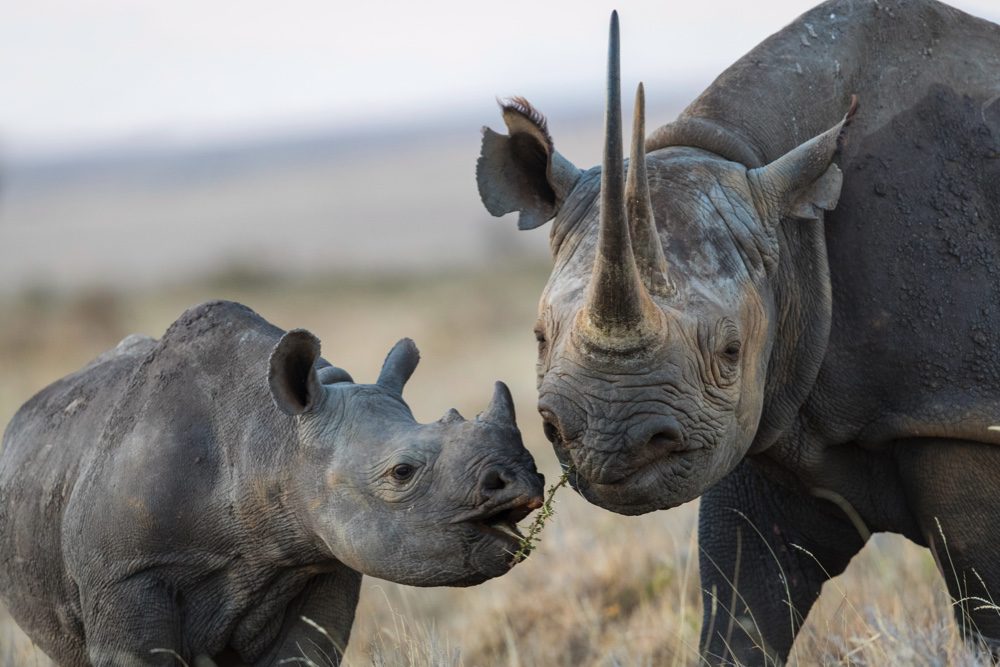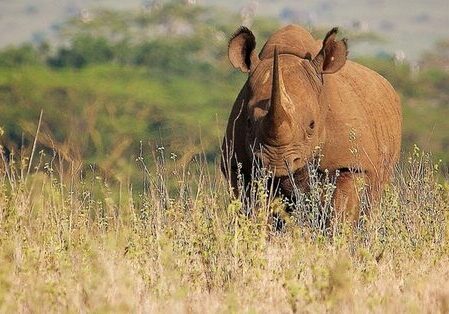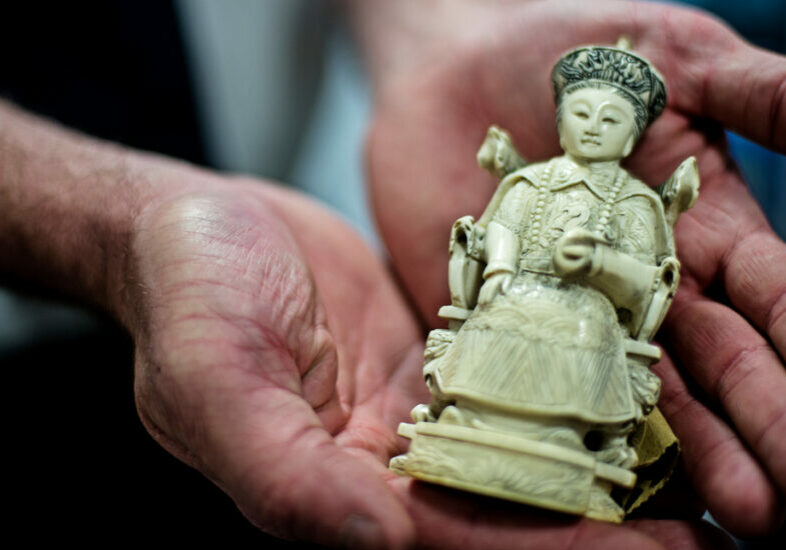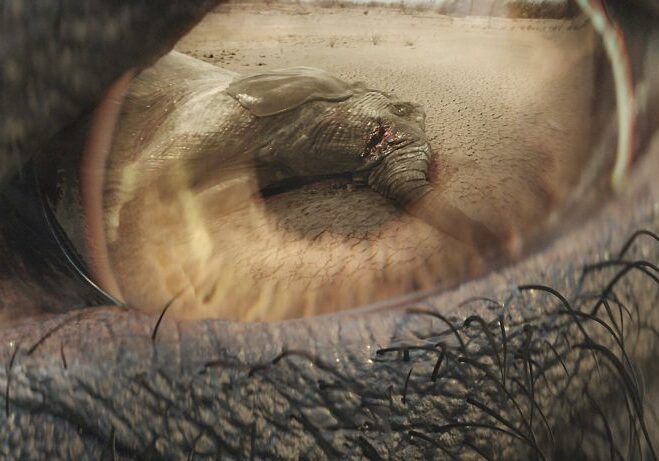In the shadow of Mount Kilimanjaro, Mkomazi National Park and the neighbouring Tsavo National Park in Kenya form one of the largest and most important protected landscapes in the world.
Herds of elephant, oryx and zebra migrate across its vast expanses, along with predators such as lions, leopards and cheetahs, as well as endangered African wild dogs.
The park is also home to a vital breeding population of critically endangered black rhinos, which had been driven to the brink of extinction in Tanzania. Back in the 1970s, the country was home to around 10,000 black rhinos. But hunting and habitat loss took a heavy toll: by the 1990s, just 32 black rhinos were left in the country. In Mkomazi, they’d been completely wiped out.
In an attempt to turn things around, Tanzania set up a 55 sq km rhino sanctuary within Mkomazi. Fifteen black rhinos were brought in from South Africa and from zoos in the UK and the Czech Republic.
It’s been a hugely successful conservation project. Today, Mkomazi is home to around 40 black rhinos, and the population in Tanzania as a whole has climbed to around 200. But rhinos remain under pressure – poaching, human impacts on their habitat and climate change are constant threats.

© NATUREPL.COM / WILL BURRARD-LUCAS / WWF
That’s where your support comes in. We became involved in the Mkomazi Rhino Project in 2020. People and wildlife in and around the park were suffering from severe water shortages due to the ongoing drought in the region. The risk of poaching was increasing, too, due to budget cuts and the difficulties of conducting patrols during the pandemic.
We helped build two dams in adjacent villages, providing a year-round water supply for people and livestock that will reduce potential conflict with rhinos and other wild animals.
We’ve cleared silt from existing dams in the national park so they can capture rainwater run-off – which helps reduce erosion and the risk of flooding when the rains do come, as well as providing a vital water source during the dry season. We’ve also trucked in emergency water supplies for rhinos and people working in the sanctuary.
Working with other conservation organisations and rhino experts, we’ve developed a new rhino management plan. We’ve fitted several rhinos with tracking devices and have marked others with distinctive notches on their ears. This helps us to monitor their movements and behaviour so we can better protect them.
How you’ve helped
Thanks to your support, we’ve also been able to increase the number of anti-poaching patrols, both on foot and by vehicle, as well as providing equipment such as radios and solar power.
For rhinos to thrive in the long term, it’s vital that local people support and benefit from rhino conservation. Last year saw the official opening of a new rhino sanctuary for tourists within Mkomazi National Park, and the number of tourists visiting the area has been increasing.
The income this generates helps fund projects in local communities, including supporting people to earn money through nature-friendly work like beekeeping. We’ve also run several events with local communities to raise awareness of rhino conservation – on World Rhino Day, for example, we took local people to visit the rhino sanctuary, which many of them had never been able to do before.
With your help, we’re confident that the black rhino population in Mkomazi will continue to grow – which could also help to create new populations in other parts of Tanzania where rhinos used to live. Thanks for your support in bringing black rhinos back from the brink. Now let’s keep the population growing!
Adopt a rhino
You can do even more to support rhinos in Tanzania and other countries by adopting a rhino.
More to explore

You helped Kenya go a year with zero rhino poaching
Thanks to you, not a single rhino was killed by poachers in Kenya during 2020 – the first time that’s happened in more than 20 years

